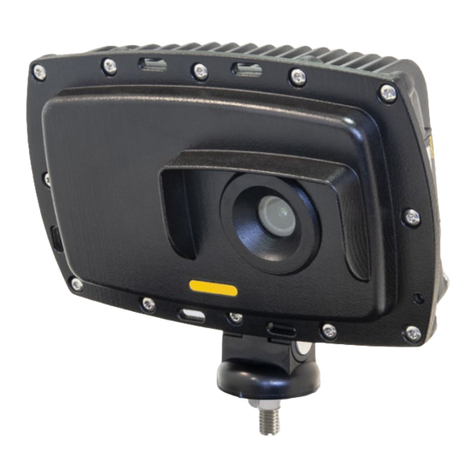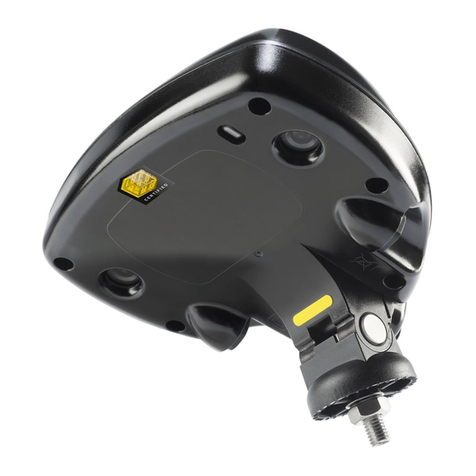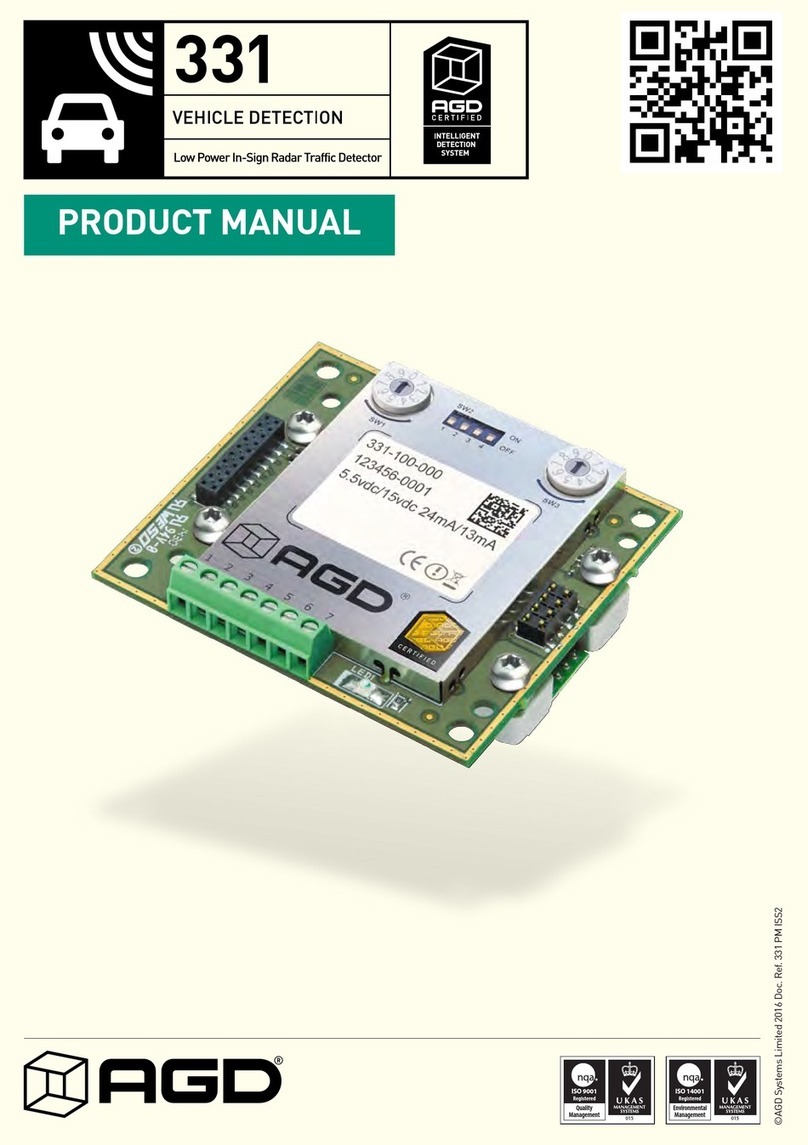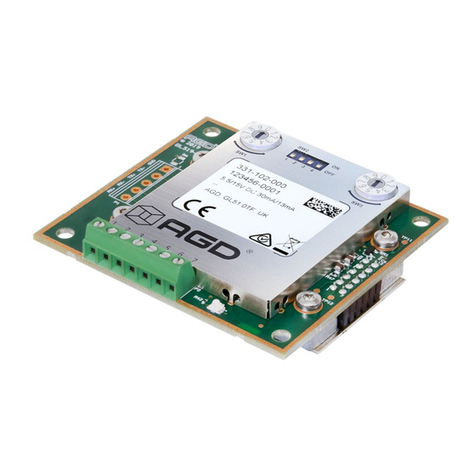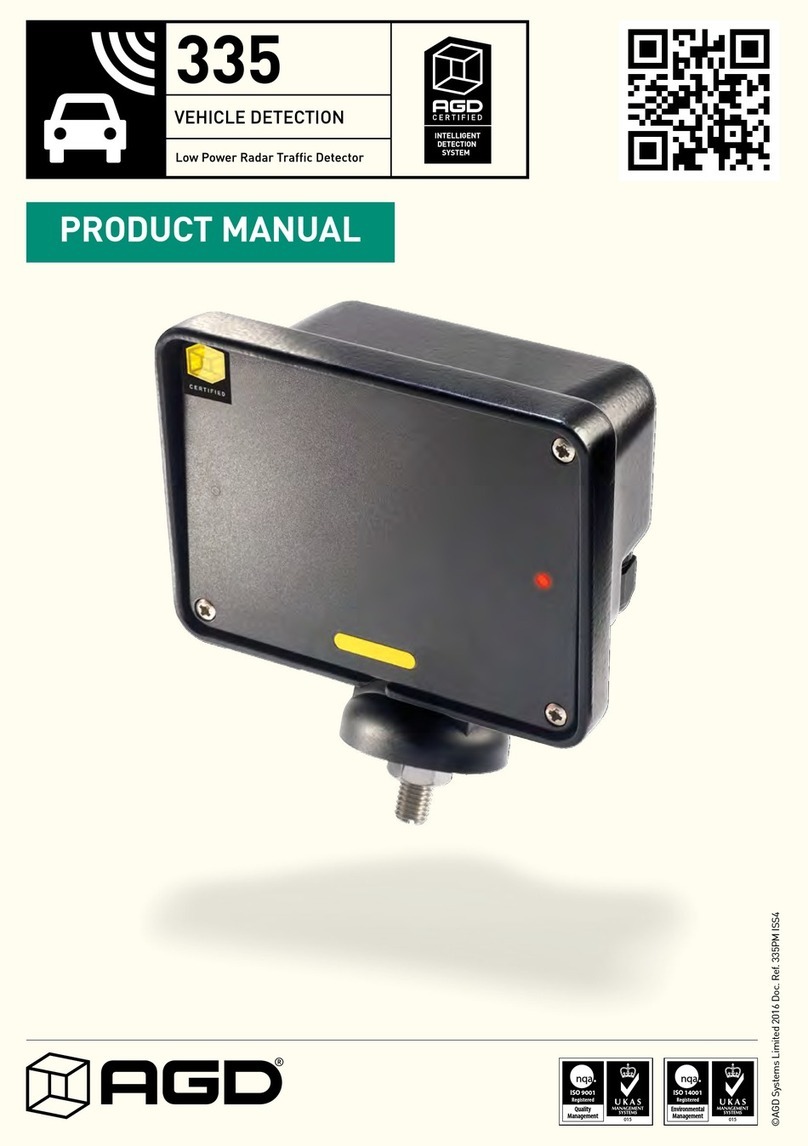
AGD 326
AGD 326
PEDESTRIAN ON-CROSSING DETECTOR
AGD 326
PEDESTRIAN ON-CROSSING DETECTOR
AGD 326
PEDESTRIAN ON-CROSSING DETECTOR
5
STEP 1 - MOUNTING HEIGHT
The AGD326 radar has been designed to
operate at a mounting height of between
2m-4m, with an unobstructed view of the
detection zone (optional height extension
bracket BR-129 is available if required).
4m max
Detector mounted at 3m
2m min
STEP 2 - DETECTOR ALIGNMENT
The AGD326 should be mounted using
the supplied hardware. Direct the
centre of the radar at the base of the
opposite corner pole. The mounting
angle will change depending on the
width of the crossing*. Lightly tighten
the mounting nut to prevent any
movement.
*Please note: The shorter the crossing the
greater the declination angle will be. Each
radar covers the opposite side of the road,
not the side it is mounted on.
STEP 3 - VERIFICATION AND
ADJUSTMENT
Confirm that the radar is correctly
aligned by ensuring that targets are
reliably detected within the specified
detection zone. Adjust if necessary and
retest. Once aligned correctly, ensure
that the mounting nut is fully tightened
and that the detector is secure.
*Please note: It is recommended that you
carry out a walk test to ensure full coverage
of the crossing is achieved. If you have a
dead spot near the edge, an additional
metre may be required on both the width
and length entered in the GUI. Please see
“Commissioning” section for further detail.
Installation and Commissioning
PHYSICAL INSTALLATION






